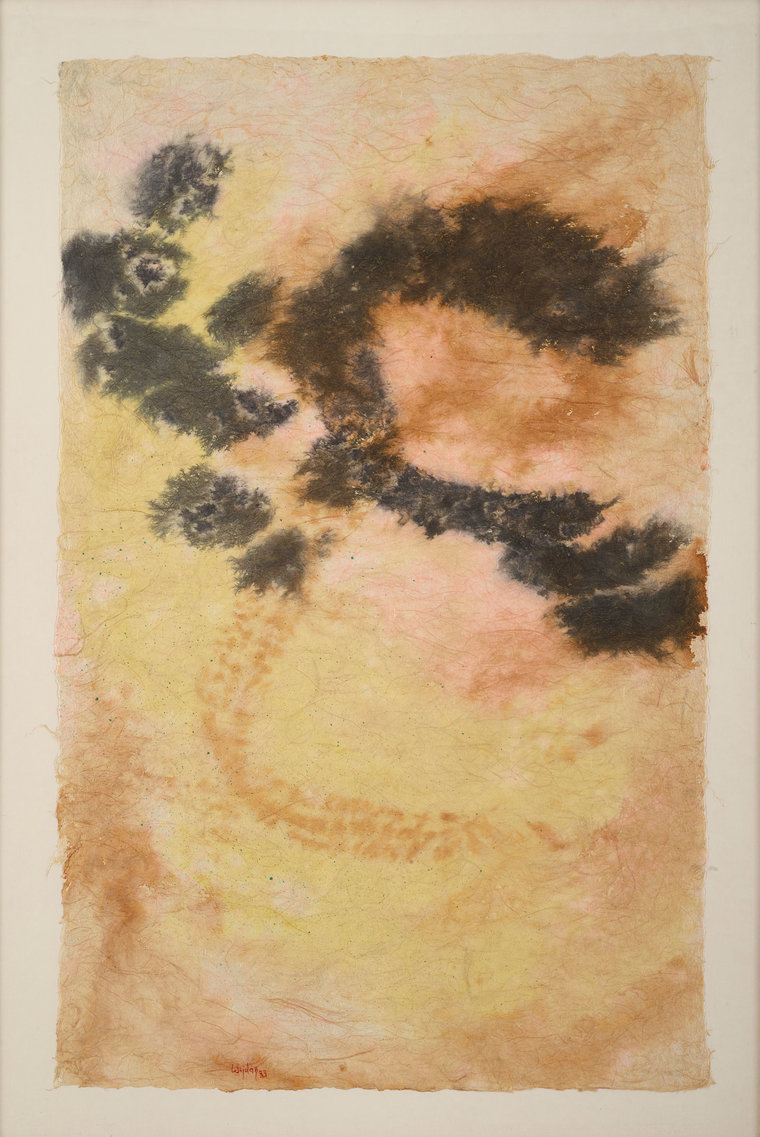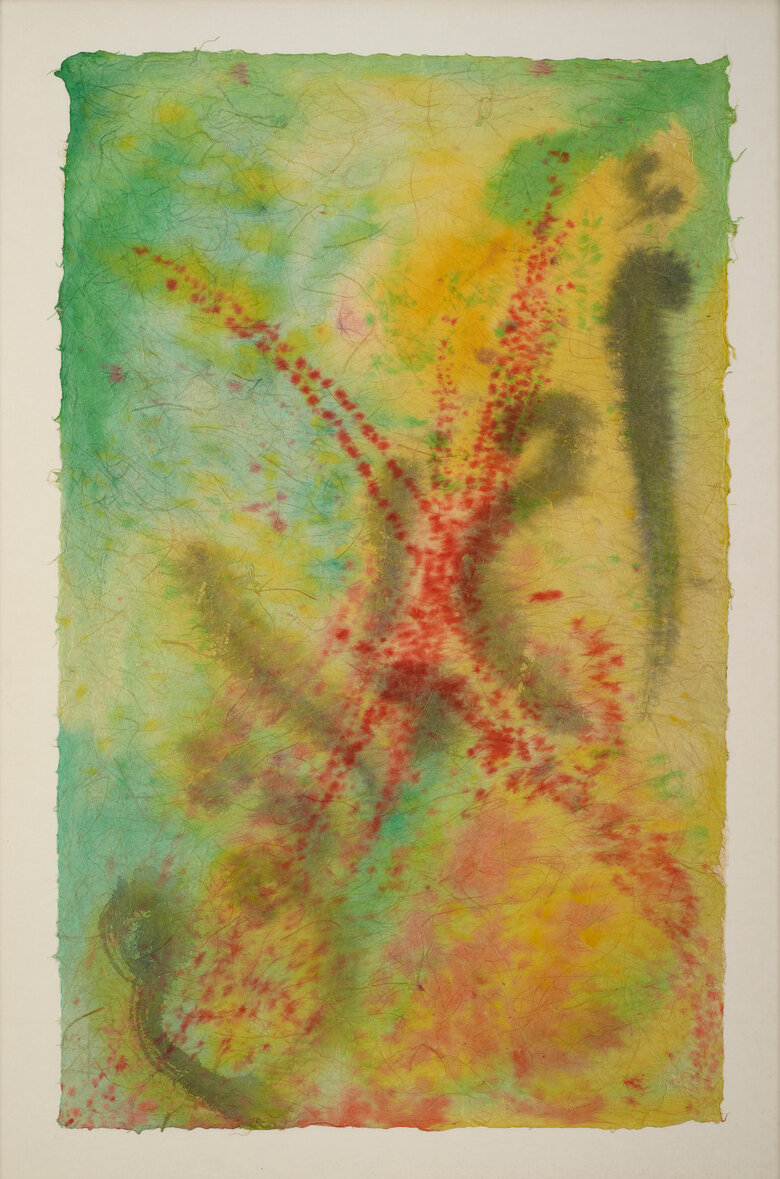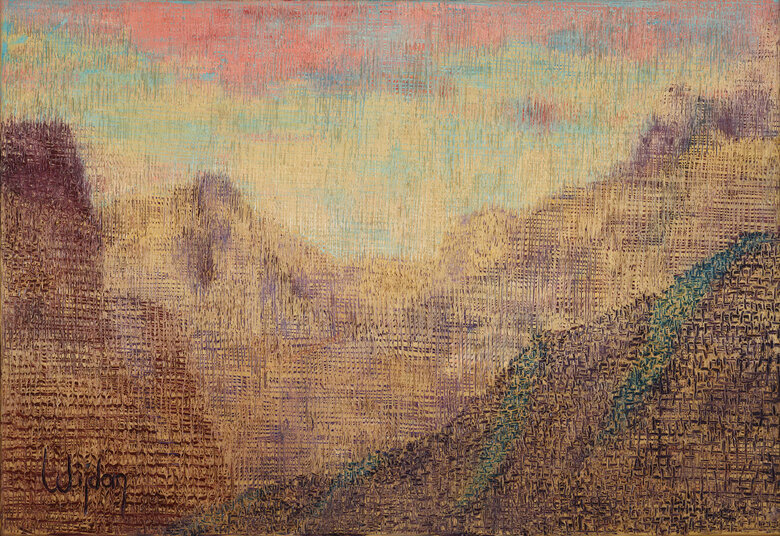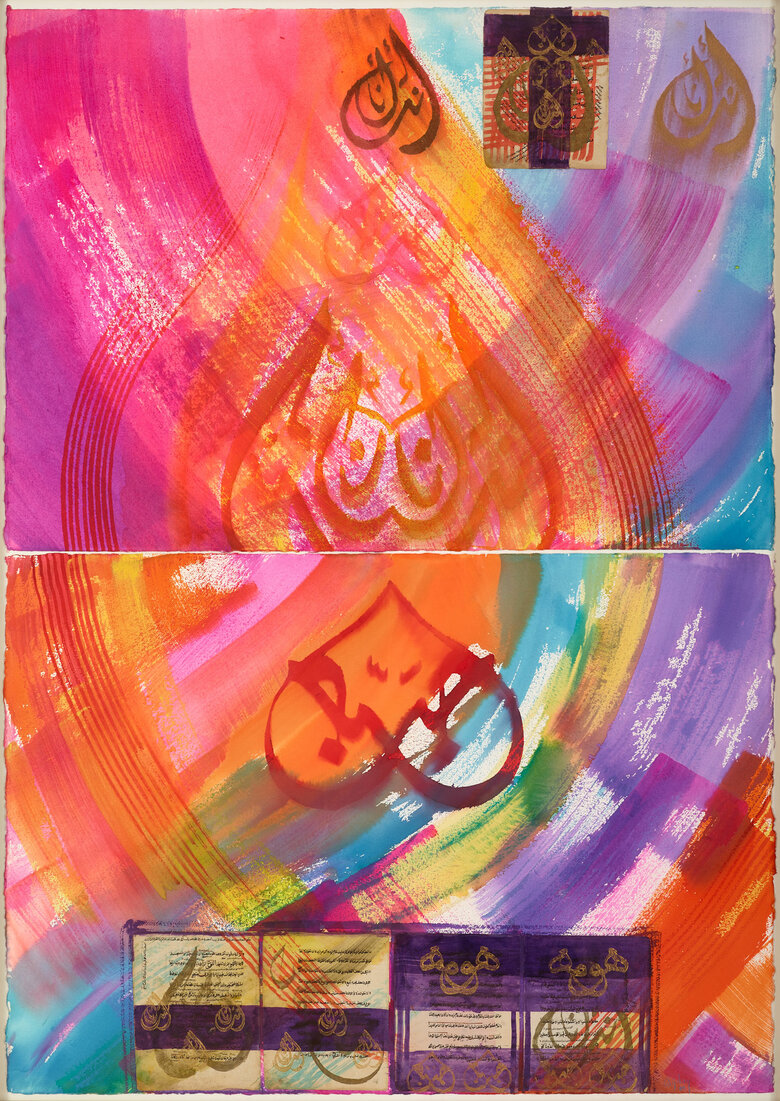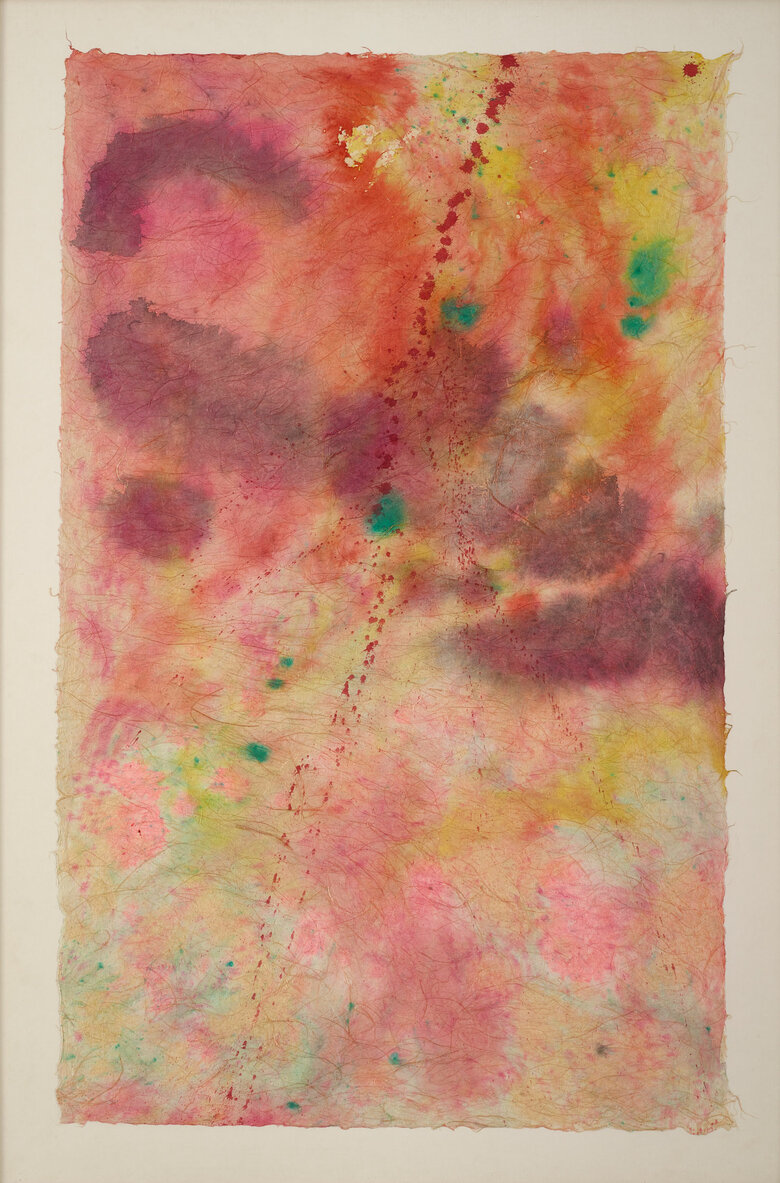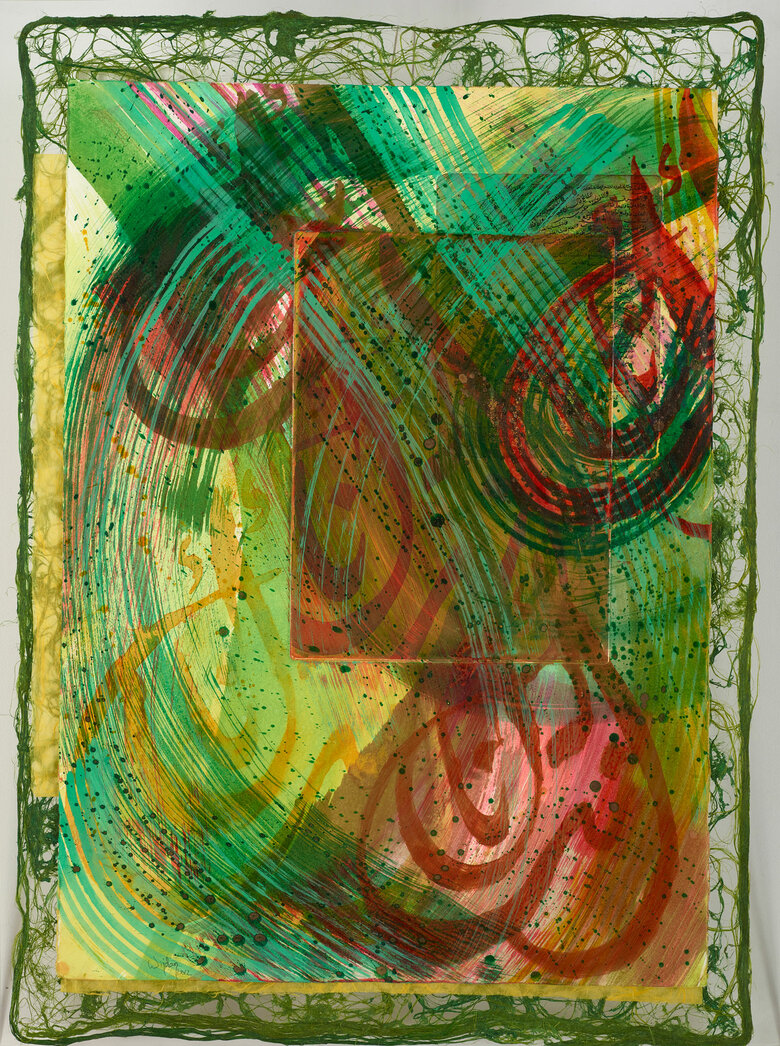Jordanian artist Princess Wijdan Ali’s Women of Karbala, 1991, is a triptych that portrays Zainab, Sukaina, and Um Kulthum – three women who played crucial roles in preserving the legacy of the Battle of Karbala. The artist created those three artworks using mixed media on handmade Japanese paper to depict abstracted Arabic calligraphy that read three names : Zainab,Um Kulthum, and Sukaina). Princess Wijdan Ali was one of the forerunners to adopt the Hurufiyyah art movement’s techniques. She blended calligraphy with abstracted shapes executed with fine layered brushstrokes. And, the shady yet dark calligraphed women’s names against the washed out pastel colors evoke the emotions and experiences of these women.
Princess Wijdan began this series during the Gulf War of 1990, a period of turmoil that paralleled themes of displacement, resilience, and survival. The Battle of Karbala (680 CE) was a pivotal event in Islamic history. Imam Hussein, the grandson of the Prophet Muhammad, refused to pledge allegiance to Caliph Yazid I, whose rule he believed to be unjust. Hussein and his small group of followers, including women and children, were surrounded in Karbala (modern-day Iraq), denied water for days, and ultimately killed in battle. The survivors, primarily women and children, were taken captive and forced to march to Kufa and Damascus, where they were presented before Yazid’s court. Though they endured immense suffering, these women ensured that the story of Karbala would not be forgotten, speaking out against injustice and mourning their dead in ways that transformed grief into resistance.
The artist’s use of calligraphy, color, and composition reinforces the emotional weight of each woman’s role in Karbala. In Islam, written language is sacred, not only as a means of communication but as a way to preserve knowledge, memory, and faith. The faded names of Zainab, Sukaina, and Um Kulthum embedded within the artwork highlight the role of language in remembrance, symbolizing how their voices remain an integral part of history.
The use of color and brushwork further reflects the individuality of each woman’s experience. The Arabic calligraphic script in the first painting reads ‘Zainab’. It is surrounded by shades of red, pink, and purple, colors that convey passion, sorrow, and strength. As Hussein’s sister, Zainab, stood before Yazid’s court and spoke with fearless conviction, ensuring that Karbala became a lasting symbol of resistance. The second painting, with a calligraphic script that reads ‘Sukaina’, represents Hussein’s daughter, who is believed to have been between five and fourteen years old. Surrounded by soft brushstrokes in a muted palette of yellows and grays, Sukaina symbolizes innocence lost to war and exile. Though she was a child, Sukaina represents the human cost of Karbala. The third painting reads ‘Um Kulthum’, indicating Hussein’s second sister; it is washed in shades of green and yellow, reinforcing themes of mourning, quiet resilience, and endurance. Unlike Zainab, who spoke out, Um Kulthum represents the silent strength of those who grieve and bear witness.
The artist’s handmade Japanese paper reinforces themes of fragility and resilience, mirroring the women themselves, delicate yet unbreakable. Through calligraphy, color, and composition, she shifts the focus from the battlefield to those who carried its memory. More than historical figures, they are part of a lived and inherited legacy that she engages with through her art. Women of Karbala is not just an artistic tribute, it is an act of memory and resistance that celebrates brave and memorable women who left a mark in history. By bringing the often-overlooked voices of women in Karbala to the forefront, Princess Wijdan challenges the way history is told, ensuring that these women are not only remembered, but also recognized for their strength, defiance, and lasting impact.
Princess Wijdan’s lineage and personal ties to Karbala deepen the meaning of this work. Born as Sharifa Wijdan bint Fawaz Muhanna in Baghdad, Iraq, to parents who were descendants of the Prophet Muhammad, she later married into the Hashemite family through Prince Ali bin Naef of Jordan. She is directly connected to Imam Hussein, Sukaina, Zainab, and Um Kulthum, the very figures she portrays. Princess Wijdan is a prolific art historian, and is recognized for her work in reviving Islamic art traditions in an abstract style.
Triptych from Women of Karbala series

